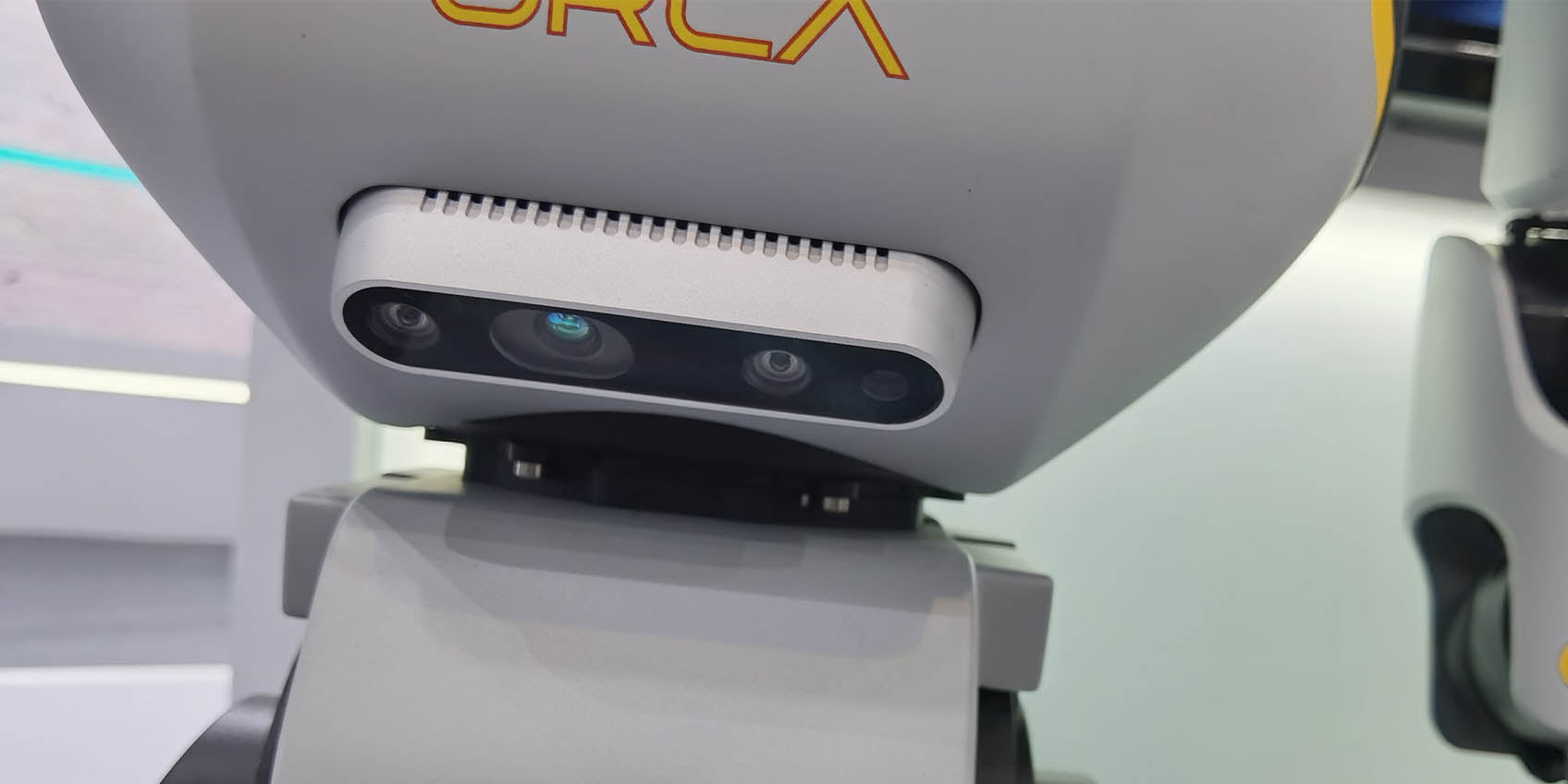Innovative Applications of ToF Sensors in AI Robots for Exhibition Spaces
(2024年11月12日)As artificial intelligence (AI) and robotics technologies rapidly evolve, Time-of-Flight (ToF) sensors have become a vital tool for AI robots, particularly in exhibition environments. By offering real-time spatial depth sensing, ToF sensors enable robots to enhance intelligent services, enrich interactive experiences, and support seamless event management. The future of AI robots equipped with ToF sensors promises even greater applications, delivering smart service experiences to visitors, exhibitors, and organizers.
How ToF Sensors Work
ToF sensors operate by emitting light pulses and measuring the time it takes for the light to reflect off surrounding objects and return to the sensor, which enables accurate distance calculations. This real-time depth sensing allows robots to create detailed 3D maps, recognize people and objects, and measure distances for precise spatial awareness. The technology is essential for navigation, interaction, and data collection in dynamic exhibition environments.
Future Applications of AI Robots with ToF Sensors at Exhibitions
1. Smart Navigation and Autonomous Guiding
Exhibition halls are often large and crowded, with complex layouts that make it challenging for visitors to locate booths or specific areas. AI robots equipped with ToF sensors can scan the venue in real-time, generate a 3D map, and autonomously navigate visitors to desired destinations. These robots dynamically adjust their paths to avoid obstacles and people, ensuring safe movement. In the future, they may even suggest booths or exhibits based on individual interests, enhancing personalized tour experiences.
2. Crowd Management and Interactive Experiences
ToF sensors enable robots to monitor crowd density and movement patterns, offering significant support for crowd management at exhibitions. Robots can help event organizers by managing foot traffic, reducing congestion, and promoting smooth venue operations. Additionally, they can track visitor behavior to provide targeted interactions. For example, if a booth becomes crowded, a robot might offer queue management, virtual displays, or product introductions to reduce waiting times. As AI capabilities advance, exhibition robots will engage visitors with conversations, gestures, and augmented reality (AR) displays, creating an immersive experience.
3. Smart Exhibits and Personalized Recommendations
Combining ToF sensors with AI, robots can observe visitor behavior to offer personalized exhibit recommendations. For instance, if a visitor spends time at a specific booth, the robot can provide further information or suggest related exhibits. This personalized engagement helps exhibitors increase exposure and optimize product promotion strategies.
4. Interactive Displays and Virtual Guidance
AI robots with ToF sensors can support interactive displays by detecting visitor movements and positioning, which triggers AR or holographic content. Visitors may interact with these robots through hand gestures or voice commands to access more exhibit information. In the future, robots could provide virtual tours, where visitors use AR glasses or the robot's screen for navigation, merging real and virtual exhibition experiences.
5. Data Collection and Smart Analysis
ToF sensors enable exhibition robots to perform real-time data collection on visitor behavior and traffic patterns, offering valuable insights to organizers. These robots can help understand popular exhibit areas, visitor flow, and dwell times, allowing organizers to optimize future event layouts. By integrating with big data and AI, future robots will produce detailed analytical reports on visitor interactions and exhibit engagement, empowering data-driven decisions.

Advantages of AI Robots with ToF Sensors at Exhibitions
Precise Spatial Awareness and Real-Time Responsiveness
ToF sensors provide highly accurate depth data, ensuring robots can respond instantly to changes in the environment. This precision is vital for safe, effective navigation and interaction in crowded spaces, helping robots avoid collisions and smoothly interact with visitors.
Contactless Operation and Safe Interaction
ToF sensors enable contactless sensing, enhancing safety by detecting visitors' proximity and movements without direct physical interaction. This technology not only prevents accidents but also promotes hygiene by reducing contact with surfaces.

Round-the-Clock Operation
Because ToF sensors function independently of ambient lighting, robots equipped with these sensors can perform efficiently in any lighting condition. This feature is essential for round-the-clock service at exhibitions, including low-light areas and evening events.
Smart and Personalized Services
Through AI-powered insights, ToF sensors allow robots to adapt to visitor behavior, providing tailored experiences like exhibit recommendations and VIP tours. This level of customization improves visitor satisfaction and helps exhibitors enhance engagement and conversion rates.
Future Development of AI Robots with ToF Sensors at Exhibitions
AI and Multi-Sensor Integration for Enhanced Intelligence
In the future, exhibition robots will integrate more sensors, such as visual cameras, voice recognition systems, and temperature sensors, enabling advanced decision-making and interaction capabilities. This multi-sensor approach will create smarter, more responsive exhibition robots.

Multidimensional Exhibition Experience Merging Virtual and Reality
The depth-sensing capabilities of ToF sensors will enable robots to blend virtual and real elements, creating an immersive, multidimensional experience. Visitors may enjoy interactive VR and AR scenes, and remote audiences could participate in virtual tours, expanding the reach of exhibitions.
Automated and Collaborative Smart Exhibition Management
In future exhibitions, robots with ToF sensors will collaborate with automated systems for security, cleaning, and lighting, offering a holistic approach to smart venue management. These robots will handle visitor services, venue maintenance, and operational support, ensuring smooth and safe events.
Conclusion
AI robots with ToF sensors bring immense potential to modern exhibitions. Through accurate spatial awareness, intelligent interaction, and real-time navigation, these robots enrich visitor experiences and streamline operations for organizers. As AI technology and multi-sensor integration evolve, AI robots will lead exhibitions toward a smarter, more interactive future, offering unprecedented value to all stakeholders involved.
Synexens 3D Of RGBD ToF Depth Sensor_CS30
BUY IT NOWhttps://tofsensors.com/collections/time-of-flight-sensor/products/rgbd-3d-camera

After-sales Support:
Our professional technical team specializing in 3D camera ranging is ready to assist you at any time. Whether you encounter any issues with your TOF camera after purchase or need clarification on TOF technology, feel free to contact us anytime. We are committed to providing high-quality technical after-sales service and user experience, ensuring your peace of mind in both shopping and using our products
- このできごとのURL:



コメント